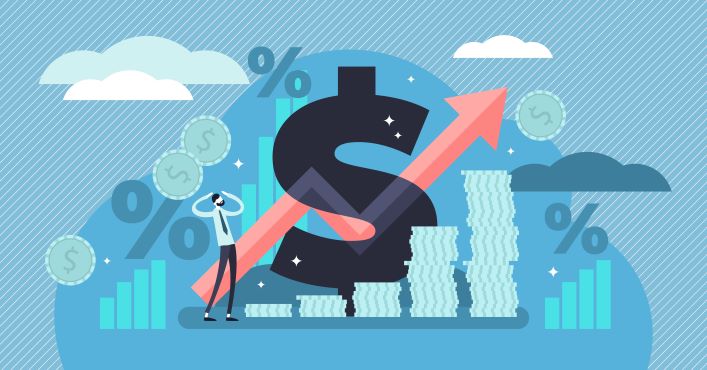Implementing enterprise resource planning systems can streamline the process
With so many variables to consider, establishing a pricing strategy for your business might seem like a monumental task. Even so, effective costing and pricing models are essential if you’re looking to maximize profits and maintain your competitive edge in the marketplace.

The Power Of Pricing
During an average year, your costs might not see a drastic shift. However, long-term neglect of your costing and pricing strategy means small changes will compound over time. Then there are sudden or unexpected changes to consider. Unique events (like a global pandemic, for example) can completely shake up the market. Failing to act fast can have consequences on the sustainability of your business. Fortunately, there are steps you can take to protect your business from short- and long-term surprises.
Expect The Unexpected
Conducting regular costing reviews will help you get ahead of and prepare for unexpected roadblocks. Pricing models and assumptions should be updated, at a minimum, once a year. Out-of-date cost models can have a severe impact on your bottom line.
It’s especially crucial to know how you stack up against the competition when the market is volatile. The best place to start is to determine your price elasticity – or how the demand for a particular product is positively or negatively influenced by a price change over a period of time. Consumer- or industry-specific trends, government regulations, and demand are just a few areas that result in drastic effects on pricing and market standards.
We’ve all seen pandemic-related shortages and supply-chain disruptions have accelerated the need for businesses to reevaluate their pricing models. Fortunately, not all market changes will have this kind of negative impact on your business. In fact, some market changes uncover opportunities to foster growth and greater efficiency.
Let’s say you own a business and your pricing strategy reflects an economy-based pricing model whereby you provide an affordable product, marketed to budget shoppers. If the market shifts to accept a higher price range for your product due to increased consumer demand, increasing the selling price of your product would result in greater profits – all while staying within the bounds of what is realistic and accepted in the current marketplace.
Remember: even slight increases in gross profit can lead to substantial growth.
Investing time into your pricing strategy and digging deeper into your approach to costing and market conditions will put you in a better position to make crucial business decisions quickly and with more confidence.
Master The Pricing and Costing Domain
Developing a strategy that fits your business objectives doesn’t need to be an impossible task. The best place to start is by considering your business’s current pricing and costing structure. This can be done by:
- Reviewing your products and offerings by type and evaluating your largest assets and low-performers by gross margin dollars and percent of revenue generated.
- Digging deeper into each product and prioritizing your top offerings. This includes researching competitors, your industry, and trends over time. You might consider how average prices in your market fluctuate throughout the year and how competitors’ price points compare to yours. Establish a baseline for your evaluation by honing in on your target marketplace.
- Considering the consumer by thoroughly researching your target audience. You might consider how trends impact key demographics and how can you better appeal to the needs of your ideal consumer?
Next, consider your current pricing process. How are you currently managing and evaluating business data? What is your strategy for preventing and correcting errors?
Invest In The Right Tools
We live in an age where tools designed to make simple work out of complex tasks are plentiful. These days, accounting software that can help you get a handle on your costing and pricing models, for example, are easily accessible and incredibly sophisticated. Thanks to investments from giants like Microsoft®, Sage, and Oracle®, all businesses now have access to top-of-the-line enterprise resource planning (ERP) systems.
ERP systems can combine your business’s management and operations tools into one location for easier administration and efficiency. Additionally, thanks to automation capabilities, you can gain a greater understanding of your data from an accounting perspective, which ultimately improves efficiency in areas of production, sales quoting, costing, and more.
Here are a few distinct advantages ERP offers:
- Improved Accuracy
As with most manual processes, there is the risk of human error. Even the smallest mistake can wreak havoc on your ability to develop and execute an effective business strategy. ERP systems virtually eliminate the human element to ensure more accurate results.
- Better Time Management
ERP software can give you more time to do the things that drove you to business ownership in the first place. Not only can this technology process complex inquiries at a rate that far exceeds anything a human can do, critical reports that can help you make business decisions can be made available instantly, too.
- Long-Term Success
The upfront cost associated with the implementation of an ERP system is minimal when you consider the long-term benefits. Not only will you spend less time on bookkeeping while gaining an efficient accounting process, ERP systems also provide your accounting team an accurate and holistic baseline of your data to work with, which allows them to better serve you. The time and money you save can then be reinvested into your business, resulting in greater sustainability and long-term success.
If you’ve struggled to stay current with annual pricing evaluations and costing models, an ERP system can be a game-changer. With the right tools to empower your business decisions, you may be better positioned to achieve your goals. Contact your Rea advisor today to learn more about ERP systems or the importance of costing and pricing models for your business.
By: Andrew Geiser, CPA, senior manager (Millersburg); Cheryl Coblentz, CPA, director of accounting services (Wooster); Matt Long, CPA, MT, principal & director of client advisory services (Wooster)
